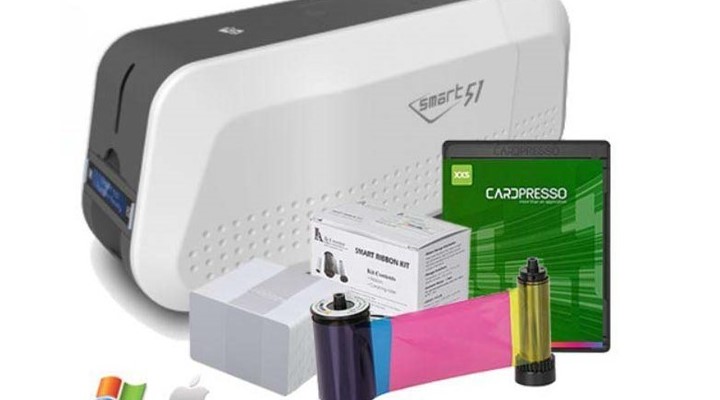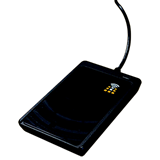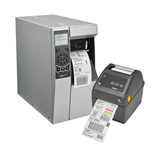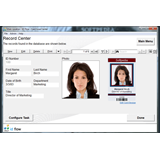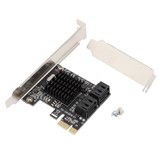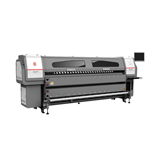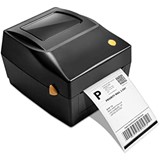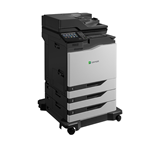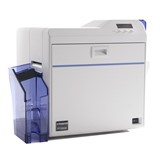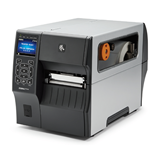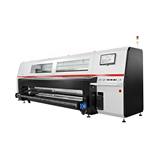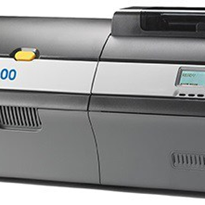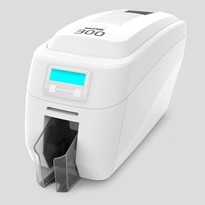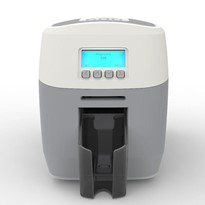You've identified a need in your organisation for printed plastic cards, but you're not sure what to do next. There are a myriad of options and it can be a bit confusing if you are not familiar with the process of producing and issuing cards to the recipients.
You've identified a need in your organisation for printed plastic cards, but you're not sure what to do next. There are a myriad of options and it can be a bit confusing if you are not familiar with the process of producing and issuing cards to the recipients.
Do I really need a card printer? What other options do I have?
PRE-PRINTED CARDS
If you require large batches of cards that are all identical except for a single unique card identifier such as an incrementing serial number or barcode, then chances are you need the cards for some sort of membership or loyalty program. You probably require full colour printing on one or both sides of the cards and you may even want a signature panel or magnetic stripe (perhaps encoded with a sequential number that you can allocate to a customer or member) on the back of the card. You can even have customer/member related data (name, member number, date since ember, etc) printed on the cards if you provide such data in an Excel spreadsheet as part of the order.
If the batches that you require will be in excess of 250 cards at a time, then you should consider ordering Pre-Printed cards.
If the batches that you require will be less than 250 cards, or if you require unique cards such as Photo ID cards then pre-printed cards will not be suitable or cost effective for you. If this is the case, check whether outsourcing will be more suitable.
Pre-Printed cards are printed at a printing factory using a screen printing process that is suited for high volume card printing. This method produces the highest quality printing that can be achieved on plastic cards and is also the most cost effective method of printing high volumes. The cost per card for pre-printed cards reduces as the size of the batch being ordered increases whereas the cost per card printed on your own card printer remains the same, regardless of how many cards you print. If the size of pre-printed card batches exceeds 1000 cards, then the cost per card saving become quite significant.
There may a catch, however, and you may still require your own printer even though you have ordered pre-printed cards ....
You may elect to go with pre-printed cards, but when you issue them out to customers or members, you may want to personalise each card with the customer/member data that you may not have had available at time of ordering your pre-printed cards. To do this, you will require your own card printer. You will only require a reasonably basic model at the low end of the price scale because your requirements are reasonably simple - you only need to print on one side of the card and in a single colour, typically black. You will be printing your text fields directly onto the pre-printed card. The cost of the printer aside, your printing costs will still be very low, typically around 3c per card (over and above the initial cost of the pre-printed cards themselves).
OUTSOURCING
Typically a bureau service will charge a small one-off set up fee and then simply charge on a per-card basis. The charge per card may be dependant on the volume of cards ordered per batch. A batch size could a single card or more.
The bureau service would set up a template for your card which might include your logo or other artwork that you may provide, a placeholder for a photo, name, designation, etc. You will be provided with a proof of this template for approval. Once approved, the same template will be used for all cards that you order on an ongoing basis. If you require a change to be made to the template (perhaps your logo changes), then you will be provided with a new proof for approval.
Thereafter, the ordering process typically entails emailing the provider with a photo of the recipient of the card and any other "personalised" data (name, etc) of the person. The bureau service will crop the photo and optimise it for contrast and brightness before printing the card. Cards are generally supplied within 3 working days of being ordered.
If you require large batches done at a time - perhaps over 20 cards - then the bureau service may request all data be provided in an Excel spreadsheet so that they can link to the data when printing cards. This ensures that data accuracy and printing efficiency.
If you require in excess of 10 cards per month, then you should consider purchasing your own printer as the total cost of ownership could be recouped in 12 months or less (depending on quantity printed and brand/model selected).
Yes, I do need a card printer. Which one do I need?
SINGLE OR DOUBLE SIDED?
A Single sided printer can only print to one side of the card at a time. It will be suitable if your requirements are for printing to one side of the card only.
If your requirement is to produce a plastic card that is printed on both sides (perhaps Photo ID on the front and accreditation details on the back), then you should be considering a duplex version of the printer.
When you set up your card template in the card design and printing software that may be provided with your printer, you will set up the layout for the front of the card as well as the layout for the back of the card. Both sides will be printed in a single process when you hit the Print button.
Some of the printer models are easily upgraded from Simplex to Duplex, so if requirements change down the track, then you can simply order the upgrade without having to change printers. Upgrade methods differ depending on the printer brand and model, and some printers are not upgradeable at all.
If you only require a single sided printer, then our advice is to go with one of the starter packs that include a single sided printer, a batch of blank white cards, a colour ribbon and card design & printing software.
If you may need to upgrade to double sided printing at a later stage, our advice is to select an IDP Smart 31S, IDP Smart 51S or the IDP Smart 70 series system, as these have the most cost effective and simple upgrade paths available (no printer downtime and any user can perform the upgrade on site).
If you select a double sided printer, please refer to our ribbon selection advice in the "Monochrome or colour printing section"
All printers can print either monochrome or colour, so your requirements in this respect won't dictate the kind printer being selected, but rather the type of ribbon that you insert into the printer. Ribbons are easily changed in a card printer - no more difficult than changing the ink in your normal desk jet printer.
If you only need to print in one colour, say black, then you will insert a BLACK ribbon (also referred to as Resin K) in the printer. These ribbons are much more cost effective (per card printed) than colour ribbons, and typically print 1,000 cards per ribbon. Monochrome ribbons are also available in other colours, such as white, gold, silver, etc. If your are printing on a dark pre-printed card, then perhaps you would want to print your text in white, not black.
Colour ribbons generally have smaller yields (200 - 400 prints per ribbon depending on printer model) than monochrome ribbons and are also more expensive. Typically the ribbons have a number of coloured panels (Yellow, Magenta, Cyan and blacK) that are used in combination to print the desired colours on the card. The ribbon would also have a clear Overcoat layer for extra protection of the printing on the card. The first letter of all these panels defines the panel sequence on the ribbon - YMCKO (K being black).
If you print to both sides of the card using a duplex printer, but only need to print colour on one side and black (only) on the other side, then you can get a ribbon specifically designed for this purpose. This ribbon is the same as the colour ribbon described above except that it has an extra blacK (only) on the back of the card. This ribbon would be referred to as YMCKOK and is more cost effective (per card printed) that using a normal colour ribbon.
DIRECT-TO-CARD OR RETRANSFER TECHNOLOGY?
Card Printers are available in two different technologies, and both have pro's and con's. Before we match your requirements to the most appropriate technology, lets briefly describe them :
Direct-to-card printers
Direct-to-card printers use a dye sublimation process to transfer dye from the ribbon to the PVC card. The dye is transferred using heat in the print head. The ribbon is laid onto the surface of the card and the printhead moves across the ribbon, heating up at the points where it needs to transfer the dye to the card. As it does this the heated points on the print head are coming into direct contact with the PVC card. The process is repeated for each colour panel (Yellow, Magenta, Cyan) on the ribbon , as well as the Black panel and the clear overlay panel.
if the printer is a double sided printer (duplex) and printing is required on the back of the card, then the card will be "flipped" over and the whole process is repeated on the back of the card before the completed card is ejected into the output card hopper. once the card is ejected, it will be completely dry and can be handled immediately - there is no wet ink residue on the card.
It is very important to ensure that the cards being printed do not contain any dirt or imperfections on the card surface prior to printing because this will cause printing imperfections or, worse, damage to the sensitive print head.
Re-transfer printers
A re-transfer printer uses a similar ribbon to the direct-to-card printer, but instead of transferring the dye directly into the PVC card, the image is transferred onto a film (retransfer film) which is then bonded onto the card. The print head is not making direct contact with the card, but only makes contact with the re-transfer film. The re-transfer film is bonded to the card using heat from a special heating bulb, and does not involve the print head.
The result of this process is a sharper, more defined image than one printed on a direct-to-card printer. Another advantage is that small imperfections on the card surface (typical on some RFID cards) do not show up any printing blemishes.
LAMINATING OPTIONS?
Some Direct-to-card printers and most Re-transfer cards printers offer lamination as an add-on option.
The laminator is generally attached to the printer, but some of them can be used independently of the printer, if required. If the laminator is attached to the printer, then the card, once printed, is passed directly into the laminator and an extra, extremely durable lamination layer is added to the card. This lamination layer increases the card durability and protects the printing from wear and tear.
Laminators can be single sided or double sided, i.e. laminating just one side of the card or both sides.
If you require lamination, but are selecting a direct-to-card printer, please ensure that the printer you are selecting has the option of adding a lamination unit. If it doesn't, you could still utilise a free standing laminator unit, such as the Smart 70 Laminator .



